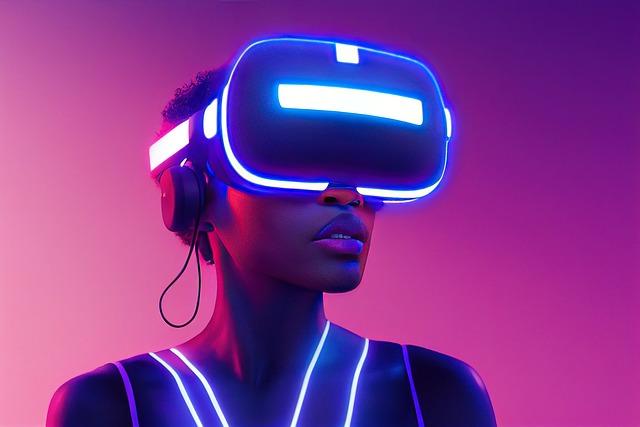In the ever-evolving landscape of cinema, a quiet revolution is unfolding—one pixel at a time. Virtual production, a seamless blend of cutting-edge technology and artistic vision, is reshaping the future of modern filmmaking. As directors and creators explore this new frontier, traditional boundaries dissolve, giving rise to limitless possibilities. From hyper-realistic sets to dynamic, real-time environments, virtual production is not just a tool but a catalyst for innovation. Join us as we delve into how this transformative approach is redefining the art of storytelling, setting the stage for a cinematic future that was once the realm of dreams.
Virtual Production: A New Era in Cinematic Storytelling
In the realm of filmmaking, virtual production is revolutionizing how stories are brought to life on screen. By blending physical and digital environments in real-time, filmmakers can create immersive worlds that were once the stuff of imagination. This innovative approach allows directors to visualize scenes during the shoot, making spontaneous creative decisions that enhance storytelling.
- Real-time Rendering: Enables filmmakers to see digital assets interact with live-action elements, streamlining the creative process.
- Cost Efficiency: Reduces the need for expensive on-location shoots and extensive post-production work.
- Enhanced Collaboration: Brings together directors, cinematographers, and visual effects artists in a shared virtual space, fostering a more cohesive creative vision.
As this technology continues to evolve, it promises to democratize filmmaking, offering independent creators access to tools that were once exclusive to major studios. The potential for storytelling is boundless, limited only by the imagination.

Harnessing Technology: Tools and Techniques Transforming Filmmaking
The integration of virtual production is revolutionizing the filmmaking landscape, merging the real and the digital in unprecedented ways. By leveraging tools like LED walls and real-time rendering engines, filmmakers can create immersive environments without ever leaving the studio. This technological leap allows for seamless blending of live-action and CGI, enabling directors to visualize complex scenes in real-time. The result is a more efficient production process that reduces the need for costly on-location shoots and extensive post-production work.
- LED Walls: These massive screens display high-resolution backgrounds that change in sync with camera movements, providing realistic lighting and reflections.
- Real-time Rendering Engines: Software like Unreal Engine powers these virtual environments, allowing for immediate adjustments and creative experimentation.
- Augmented Reality: Enhances the storytelling by overlaying digital elements onto live scenes, enriching the narrative without additional post-production.
These innovations not only streamline production but also open up new avenues for storytelling, offering filmmakers a dynamic toolkit to push creative boundaries.
The Creative Edge: Enhancing Imagination with Virtual Sets
In the realm of filmmaking, virtual sets are opening doors to boundless creativity, allowing directors and producers to craft worlds previously unimaginable. These digital landscapes offer a playground where the only limit is one’s imagination. By utilizing cutting-edge technology, filmmakers can seamlessly blend reality with digital artistry, transforming abstract concepts into visually stunning narratives.
Key Benefits of Virtual Sets:
- Flexibility: Easily modify scenes without the constraints of physical locations.
- Cost Efficiency: Reduce the need for elaborate physical sets, saving on resources.
- Time-Saving: Accelerate production timelines with immediate adjustments and iterations.
- Unlimited Possibilities: Create environments that defy the laws of physics and reality.
By pushing the boundaries of traditional filmmaking, virtual sets empower storytellers to innovate, inspiring a new wave of cinematic experiences.

Practical Advice: Integrating Virtual Production into Your Workflow
Embracing virtual production requires a thoughtful approach to ensure a seamless integration into existing workflows. Start by assembling a team familiar with both traditional filmmaking and virtual tools. This blend of expertise ensures a smoother transition and enhances creative possibilities. Training and workshops can be invaluable for familiarizing your crew with the new technology.
- Invest in the right technology: Choose software and hardware that align with your project needs and budget.
- Collaborate early: Engage with virtual production specialists during the pre-production phase to maximize the technology’s potential.
- Focus on pre-visualization: Use virtual sets to experiment with different scenes, lighting, and camera angles before actual filming begins.
- Iterate and adapt: Be prepared to adjust your workflow as you discover what works best for your team and project.
By taking these steps, filmmakers can harness the power of virtual production to push creative boundaries and achieve stunning results.

